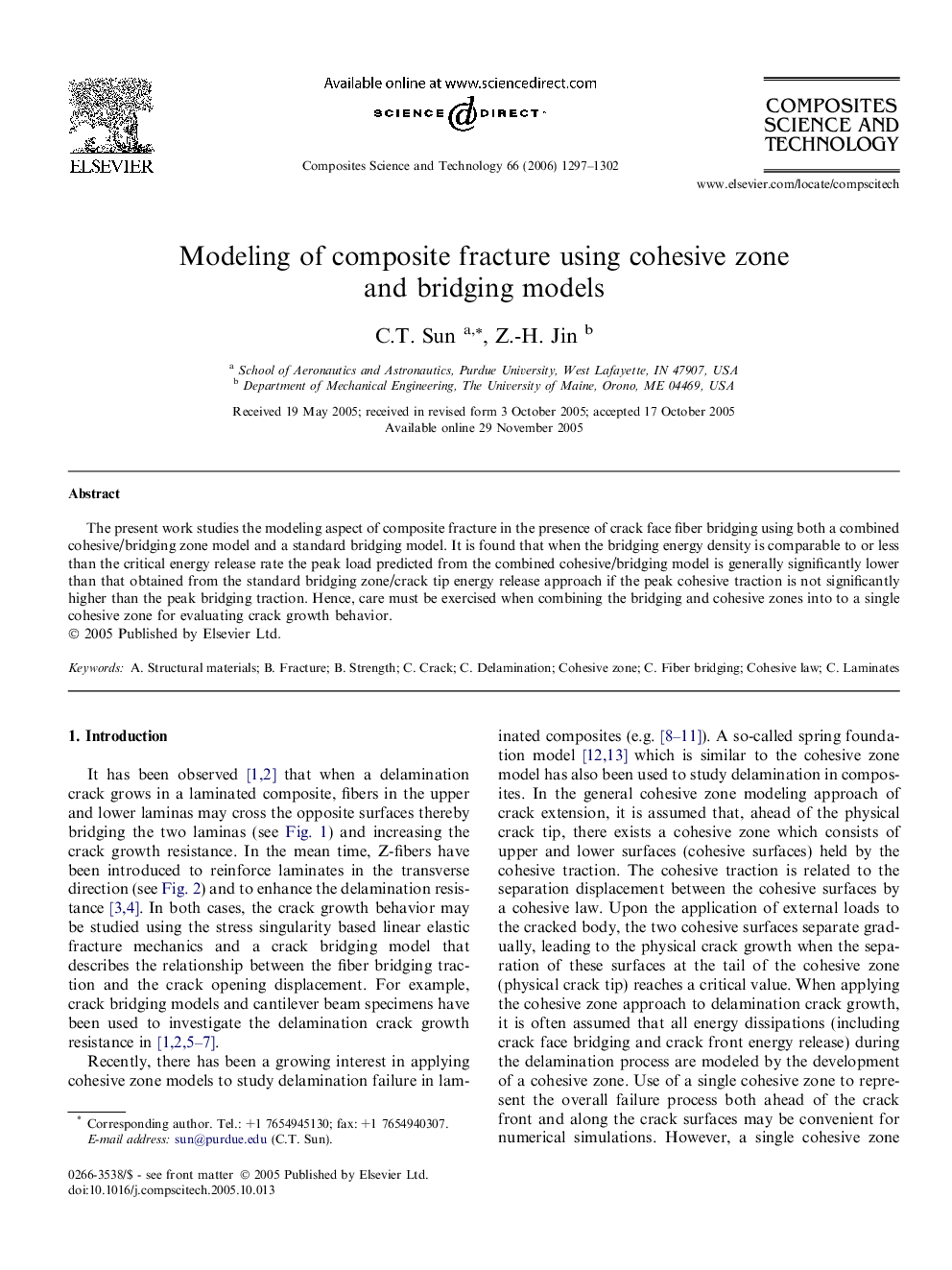| Article ID | Journal | Published Year | Pages | File Type |
|---|---|---|---|---|
| 822943 | Composites Science and Technology | 2006 | 6 Pages |
Abstract
The present work studies the modeling aspect of composite fracture in the presence of crack face fiber bridging using both a combined cohesive/bridging zone model and a standard bridging model. It is found that when the bridging energy density is comparable to or less than the critical energy release rate the peak load predicted from the combined cohesive/bridging model is generally significantly lower than that obtained from the standard bridging zone/crack tip energy release approach if the peak cohesive traction is not significantly higher than the peak bridging traction. Hence, care must be exercised when combining the bridging and cohesive zones into to a single cohesive zone for evaluating crack growth behavior.
Keywords
Related Topics
Physical Sciences and Engineering
Engineering
Engineering (General)
Authors
C.T. Sun, Z.-H. Jin,
